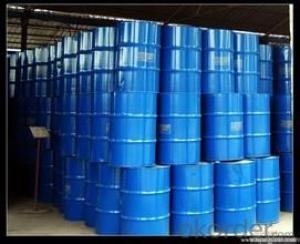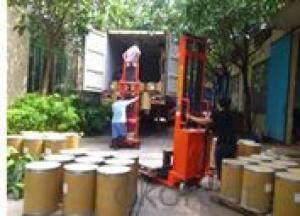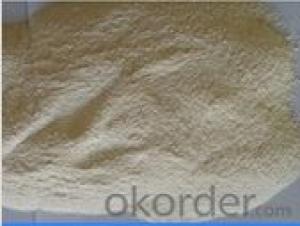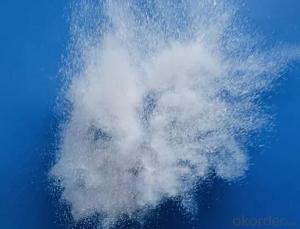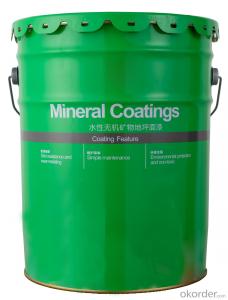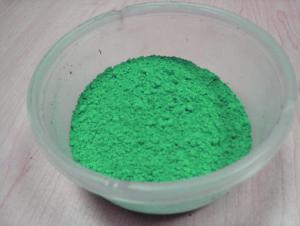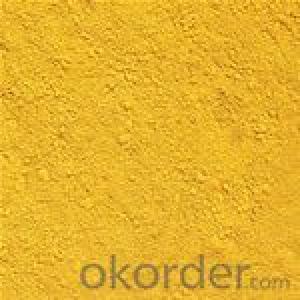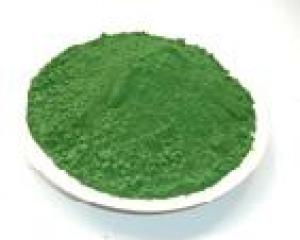Sodium gluconate textile chemicals about additive for concrete
- Loading Port:
- Shanghai
- Payment Terms:
- TT OR LC
- Min Order Qty:
- 1 bottle
- Supply Capability:
- 10000 bottle/month
OKorder Service Pledge
OKorder Financial Service
You Might Also Like
Introduction:
White or light yellow crystalline granular or powder, easily soluble in water, slightly soluble in alcohol,
insoluble in ether.
Sodium gluconate textile chemicals about additive for concrete is sodium salt of gluconic
acid that is produced by the fermentation of glucose, It is soluble in water, non corrosive,
non toxic, biodegradable.
•Usage:
Cement concrete additives about sodium gluconate is widely used in textile dyeing, printing and
metal surface water treatment, chelating agent, steel surface cleaning agent, cleaning agent for glass bottle, chelating agent for cement, plating and alumina dyeing industries. Besides it can be used as concrete admixture, cement retarder, corrosion inhibitor in concrete industrial.
Advantage
1.Used as a water reducing agent and retarder in concrete engineering.
2.Excellent scale and corrosion inhibitor, is widely used in water quality stabilizer.
3.Used as chelating agent in textile dyeing and printing, metal surface treatment, water treatment and other industries.
4.As chelating agent for cement, plating and alumina dyeing industries.
5.Used as a steel surface cleaning agent, glass bottle washing agent, electroplating industrial
alumina coloring.
- Q:why do plants need more than one pigment for light absorption?
- Pigments are molecules with an array of covalent bonds capable of absorbing a photon of light that has only a certain wavelength. The absorbed wavelength is only a fraction of the continuous range of wavelengths reaching the reaction center of a chloroplast. Each pigment species absorbs a different portion of the spectrum. So most photosynthesis works in combinations of pigments to absorb a across the visible spectrum and somewhat beyond. Some pigments (accessory photosynthesis carotenoid pigments) absorb useful wavelengths to pass the energy to chlorophyll A while the Xanthophyll Cycle pigments absorb potentially harmful high energy wavelengths for dissipation. Accessory pigments provide a range of spectra collection that allowed plants to adapt successfully to environments of differing light conditions. Pigments provide coloration to signal flower or fruit maturity to pollination partners or seed dispersal partners. Anthocyanins and carotenoids perform these communication functions. Phytochrome is a pigment that absorbs one wavelength only to toggle to another shape capable of absorbing at a different wavelength. Algae and plants both use this system to inform them of the time of year so they can synchronize with the best season in their habitat for reproduction efforts to succeed. Plants use phytochrome to regulate the photoperiod of flowering or seed germination.
- Q:We see pigments everywhere in products. They make a variety of things we see today. Where does it come from? Do they actually take a red rose pedal, grind the color and designate it as the color red?
- Basically, it's an aqueous solution with an affinity to a specific substrate. Usually requires a mordant (a binding agent for specific fibers, usually a polyvalent metal ion). Dyes appear to be colored because they absorb some wavelengths of light more than others. In contrast with a dye, a pigment generally is insoluble, and has no affinity for the substrate. Some dyes can be precipitated with an inert salt to produce a lake pigment, and based on the salt used they could be aluminum lake, calcium lake or barium lake pigments. Natural dyes include things like; berries, roots, berries, bark, leaves, and wood, fungi, and lichens. There are also synthetic dyes the most famous (and the first made) being mauveine. Doing a simple Google search would bring up some different synthetic dyes, as well as the different types! (Too many to type here :-)) Hope that helped!
- Q:the absorption spectrum and the range of light reflected by each
- three major pigments are 1.chlorophyll a 2.chlorophyll b 3.carotenoids chlorophyll a is the major pigment,chlorophyll b n carotenoid are the accessory pigments which help in absorption of the incident light of different wavelengths. another pigment xanthopyll-fucoxanthin is also present in some plants
- Q:Does anyone know its chemical formula or constituents ?
- Pigments are generally used for overdipping or decorating candles. Pigments do not fade and do not migrate/bleed, but pigments will clog wicks if used to color solid-colored candles. Pigment flakes are clean and easy to use and give vivid and brilliant colors. They are safe for the candlemaker and for the candlemaker’s customers. The pigment flakes comply with OSHA, TSCA and EN 071 (part 3) legislation. Pigments are insoluble in the medium they are coloring. Pigments, therefore, are not soluble in wax. They color the wax by dispersion. This means that pigments have to be distributed evenly throughout the wax, or dispersed in the wax, in order to color it (versus dyes which are soluble in wax and become a part of the wax to color it). Mixing, therefore, is very important. Usage and Dosage Instructions Dissolve pigments flakes in your wax formulation at approximately 185F - 85C. It is recommended to pre-disperse the required amount of color (see dosage chart) in a small amount of the dipping wax in a ratio of 1:5 color to wax. This should be done at 185F - 85C, using an electric mixer will disperse the color more quickly. Once the pigment is well dispersed, add it to the remaining dipping wax. Stir the dipping wax well before starting production and after each production break. Overdipping Dosage 2 dips : 1% by weight of wax formulation 1 dip : 1.5% by weight of wax formulation For color consistency, always add the same amount of color to your dipping wax. Use a scale to weigh the components of your dipping formulation. Always dip candles at the same temperature, temperature variations will result in color deviations. Too hot a dipping wax will make the shade of color on the candle appear lighter. Too cold a dipping wax will make the shade of color on the candle appear darker. Any variations in the overdipping wax used may result in a change of color on your finished candle. PROPER MIXING IS NECESSARY TO ACHIEVE UNIFORM DISPERSION OF PIGMENTS
- Q:I need to know the classes and sub classes of pigments classification
- organic pigment and inorganic pigment
- Q:ive been watching a lot of makeup videos on youtube and a lot of the girls use mac pigments. what exactly are they and how are they different from regular eyeshadow? are they easier or more difficult to use?
- Pigment okorder /....
- Q:Can somebody answer this in AP BIO language please
- A pigment molecule absorbs at specific wavelength(s), meaning that when light of a specific wavelength is incident to the molecule only certain wavelengths are absorbed while others are transmitted. The spectrophotometer emits monochromatic light (light of only one wavelength) which passes through the pigment molecule and a detector determines the amount of light that is either absorbed or transmitted by the sample. This is done at wavelengths from the UV (180-330 nm) to the visible (330-700 nm) and the light that is either transmitted or absorbed is detected by the spectrophotometer and is able to be graphed with absorbance representing the y-axis and wavelength representing the x-axis. The resultant graph will depict the absorption spectrum of that particular pigment molecule. Hope that helps.
- Q:i was thinking of this all day long and then i thought of posting this question for you to help me sort it out
- Pigments are chemicals inside living things that absorb certain types of light. In plants, the pigment chlorophyll in leaves absorbs sunlight for photosynthesis to work, where the energy comes from. Chlorophyll absorbs all light except green, which is reflected. That's why most plants are green. NOT the other war around. :) :)
- Q:Pleaseeeeee answer A.S.A.P Pleaseeee! Are pigments haram?
- Most pigments for dyes and paints come from plants or minerals. What exactly do you need? The second part of your question about haram, needs some explanation, too.
- Q:I have bought 2 Mac Pigment to use as eyeshadow,I thought it was supposed to be easy to use,turned out it wasn't.My eye looked like I got hit, so messy and the pigment was all over the place. I wonder if i should wet my brush or do u have some kind of tricks before applying it.Any advice would be appreciated.Thanks for helping.
- With the pigment you have many options to apply them. In my experience I have learned three primary ways that work well. 1) If you are looking to use as a shadow apply a base such as a lid primer or a paint, then apply the pigment using little pigment, it is always easier to build up the color than it is to take away. 2) If you want the color to be darker and have more dramatic impact use the pigment with mixing medium or water and apply carefully with a brush using little amounts. 3) I like to use the pigments as eyeliner, to do that I either apply just using a brush, using mixed with water/medium or on top of black eyeliner. By using a base your color lasts longer and it gives you a smoother application. Also to deal with the stuff that drops on your cheeks my hints are either do your eyes first and use a makeup remover wipe to take it away or use your powder apply it using a brush heavily up under your eyes and then when done with eye makeup dust the powder and pigments away. I know the second option looks weird but it does work. Also if you ever do apply pigments and they start to go to dark or look a bit patchy try applying a eyeshadow over them not only to change the color but also to change the look of the eyeshadow texture. Hope this helps.
1. Manufacturer Overview |
|
|---|---|
| Location | |
| Year Established | |
| Annual Output Value | |
| Main Markets | |
| Company Certifications | |
2. Manufacturer Certificates |
|
|---|---|
| a) Certification Name | |
| Range | |
| Reference | |
| Validity Period | |
3. Manufacturer Capability |
|
|---|---|
| a)Trade Capacity | |
| Nearest Port | |
| Export Percentage | |
| No.of Employees in Trade Department | |
| Language Spoken: | |
| b)Factory Information | |
| Factory Size: | |
| No. of Production Lines | |
| Contract Manufacturing | |
| Product Price Range | |
Send your message to us
Sodium gluconate textile chemicals about additive for concrete
- Loading Port:
- Shanghai
- Payment Terms:
- TT OR LC
- Min Order Qty:
- 1 bottle
- Supply Capability:
- 10000 bottle/month
OKorder Service Pledge
OKorder Financial Service
Similar products
New products
Hot products
Related keywords
